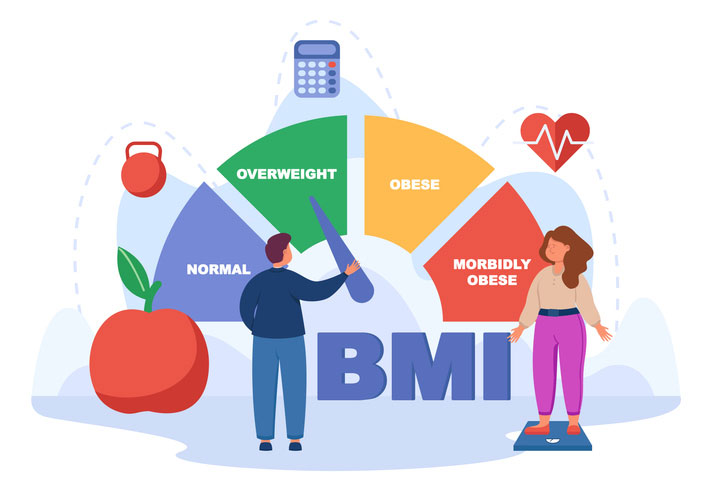
For more than a century, nutrition has been in a state of constant evolution. In 1894, the US Department of Agriculture (USDA) published its first dietary guide. In it, the nutritional value of food is determined using simple metrics like caloric value and a vague understanding of mineral composition. Dietary recommendations were similarly simple. They were based on occupation, physical activity level, and not much else.
The following bachelors and Master’s programs offer career-focused instruction delivered by trained nutritionists with experience in the field. Find out more what each individual course of study offers through the locations below.
American University offers an Online Master’s in Nutrition Education that will prepare you to become an influential leader in nutrition education and advocacy while promoting nutrition and healthy lifestyle choices in your community and beyond.
By the 1930s, nutritionists had discovered more than just a few more vitamins and minerals. They’d discovered the importance of nuance. During the Great Depression, one popular dietary guide made recommendations at four different price levels. In the 1940s, the USDA promoted the newly established Basic 7 food groups. A poster from the era advises people to eat something from each group every day, but at the bottom, it states, “In addition to the Basic 7… eat any other foods you want.” Like other government agencies, the USDA knew World War II rationing would put a strain on the population. Lean times were likely on the way and a little extra bulk may help quell initial hunger pangs.
So where does that put us today? The USDA’s current dietary guidelines seem to cover it all: food allergies, beverage choice, budgetary considerations, and much more. Does this mean we’re finally in an age of total nutritional enlightenment? Not according to statistics about the country’s health:
- 19% of American children and about 31% of adults are obese.
- In 2021, nearly 1 in 2 American children didn’t eat a daily vegetable.
- Heart disease kills almost 700,000 Americans every year and is the number one cause of death in the country.
There’s a disconnect somewhere between what we know and we do and it’s literally killing us.
To Professor Dara Ford of American University’s Nutrition Education Master’s program, tackling this issue means questioning everything she knows about her field and inviting her students to do the same:
“My approach to teaching involves stepping back and taking a hard look at a lot of the traditional measures that we use and examining them with a pretty critical eye.”
But Professor Ford’s critiques of modern nutrition aren’t scattershot, naysaying diatribes built on shaky, unproven ideas. They’re evidence-based re-evaluations of what being healthy actually means. Just as importantly, they come from a desire to make healthy living an attainable goal for all. In a recent interview with nutritionED.org, Professor Ford shared how her informed skepticism makes nutrition a more holistic and relevant science.
 Over the course of her decade-long career in nutrition education, Professor Dara Ford has published many insightful papers on senior health and even helped develop a dietary quality evaluation tool. Currently, Professor Dara Ford is Program Co-Director of American University’s Masters of Science in Nutrition Education program. By lecturing in classes like Life Cycle Nutrition, Nutrition for Health, and Strategies for Weight Control in the school’s Department of Health Studies, she hopes to arm tomorrow’s dietary professionals with a mind for science and a deep understanding of the people they serve.
Over the course of her decade-long career in nutrition education, Professor Dara Ford has published many insightful papers on senior health and even helped develop a dietary quality evaluation tool. Currently, Professor Dara Ford is Program Co-Director of American University’s Masters of Science in Nutrition Education program. By lecturing in classes like Life Cycle Nutrition, Nutrition for Health, and Strategies for Weight Control in the school’s Department of Health Studies, she hopes to arm tomorrow’s dietary professionals with a mind for science and a deep understanding of the people they serve.
Taking A Second Look at Established Metrics
Like any other science, nutrition is built on quantifiable metrics. The nutritional value of food is measured in terms of fats, sugars, sodium, vitamins, and more. Similarly, nutrition professionals use things like body mass index (BMI) and blood sugar to gauge where their clients and patients are on their nutritional journeys.
However, these metrics are often misunderstood, misrepresented, and misused. According to Professor Ford, BMI is the perfect example of this phenomenon:
“Body mass index is riddled with really complex and complicated issues. It’s not used as intended. It’s not intended to assess body fat. There are a whole lot of issues with that.”
But why is BMI so complicated? It’s a relatively simple calculation of a person’s mass divided by their mathematically squared height. Using this number, healthcare professionals can quickly determine if a person is in a healthy weight range and make recommendations. Considering America’s obesity problem, isn’t BMI the perfect metric to use?

For many nutritionists, the problem with BMI is that it lacks nuance. It doesn’t distinguish between fat and muscle. Nor does it take factors like activity level or heart health into account. It can be helpful, but it’s not a sufficient nutritional metric when used alone. In fact, one of Professor Ford’s very own studies demonstrates why.
In 2014, Professor Ford and her colleagues found that a BMI of 25 to 29.9 (a range often classified as overweight or pre-obese) was associated with a decreased risk of mortality in seniors. On the other hand, seniors with a BMI of less than 18.5 (underweight) had an increased risk for mortality. So while much of the world frets over melting fat, aging adults may live longer, healthier lives by maintaining a higher BMI in their later years.
In light of these findings, Professor Ford doesn’t advocate for throwing out BMI altogether. Instead, she asks her students to use nutritional metrics with caution and context:
“I encourage students to come into class open-minded and willing to critically assess what the standards are. It’s a real challenge because all of the evidence, all of the tools, all of clinical practice relies on some of these measures that we know are not great.”
If the very standards of nutritional health are problematic, what’s the solution? According to Professor Ford, the answer lies in taking a more holistic view of what dietary success means.
Focusing on Outcomes and Redefining Success
Given the limitations of metrics like BMI, many nutrition professionals and the people they serve form a dangerously narrow definition of success. Professor Ford sees this issue frequently in nutrition education and the world at large:
“People will say, ‘Oh this diet wasn’t successful.’ But what’s the measure of success? Is it just weight? Because that’s not the same thing as health. We really need to think again about the outcome we’re trying to achieve.”
Take, for instance, the seniors in Professor Ford’s study. Strictly speaking, the ones on the higher end of the BMI scale are outside of the recommended ratio. They need to lose weight. But this metric-focused goal neglects the many benefits maintaining a higher weight can have for aging adults:
- Higher BMI in old age is associated with lower risks of hypertension.
- Dental, digestive, and other health issues often drive seniors’ weights down. Added weight can be an effective safety net.
- Seniors with higher-than-normal BMIs often have higher survival rates when it comes to congenital heart disease and heart failure.

Critics may say such advantages don’t always outweigh other health risks associated with being overweight. And typically, these benefits don’t extend to younger people in the same BMI range as their elderly counterparts. But that’s exactly Professor Ford’s point. Nutritional guidelines and metrics need to be contextual and focused on broad health outcomes. They need to serve people based on where they are in their life cycle, a topic Professor Ford enthusiastically covers in her classes at American University:
“I think the life cycle course is very interesting because most of what we hear really only pertains to a healthy adult population. We examine the tools that are used, but more critically — what are the strict recommendations but also what are the sociocultural implications of those recommendations?”
Fortunately, Professor Ford has seen some recent progress in that regard, but there is still work to be done:
We didn’t have recommendations in the dietary guidelines for children under 2 until the 2020 version. But we always need to be evolving. We need to incorporate the standard science with that whole-person perspective.”
Adapting Nutrition Education to Today’s World
Even though Professor Ford’s current schedule at American University includes classes on everything from lifecycle nutrition to epidemiology, she wants all of her students to walk away with at least one important lesson: that health isn’t about metrics and it certainly isn’t one-size-fits-all. It’s adaptive, scientifically sound, and outcomes-based:
“That’s an underlying message that persists throughout my classes. My students would probably tell you they’re sick of hearing that from me.”
But as long as there are whole communities besieged by chronic illness and a lack of access to proper nutrition, Professor Ford’s message bears repeating. There’s no room for complacency. If nutritionists have to question established guidelines to help people become happier and healthier, good. The world stands to become a better place because of it.